We woke up this morning in Playa Ancon (Ancon Beach), located a short ride to the center of Trinidad. One of the seven settlements established by Diego Velázquez, the town initially thrived off of gold and although this quickly dried up, Trinidad enjoyed a prosperous past as a port city. Like many other cities in Cuba, Trinidad enjoyed a surge in prosperity with the development of sugar cultivation in the surrounding area.
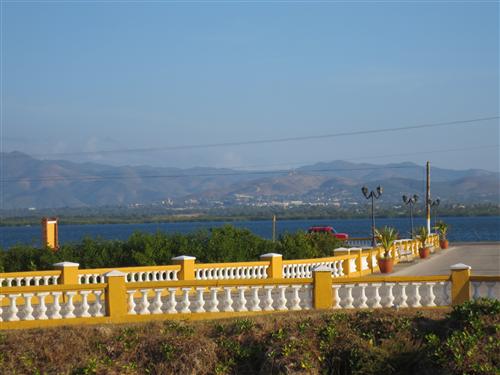
On our morning walking tour of the city we first passed through a landscaped square. You could feel the city waking up as people bustled through the square to work, or met up with friends to converse.
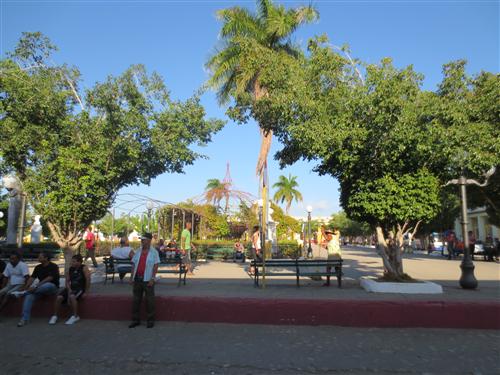
In the early 20th century nobody thought much of Trinidad and since the port had silted up in the mid-19th century poverty had ensured that the urban landscape did not change. With the neo-colonial movement in the 1930s people started paying attention to Trinidad as an architecturally important site and its preservation history is as old and robust as that of Old Havana. In fact, Trinidad is celebrated as Cuba’s most fully preserved early colonial town.
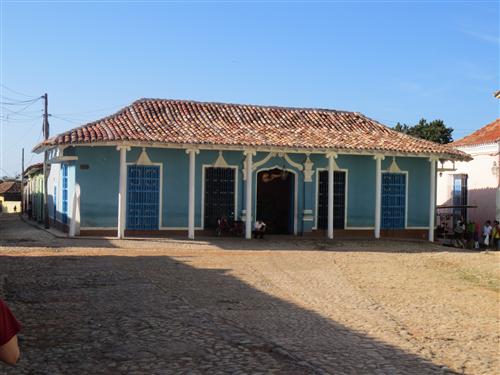
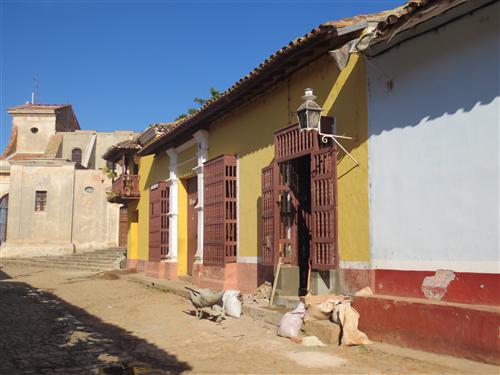
Houses in Trinidad have two common characteristics: tall windows protected by wooden rejas, or grills, and decoratively carved roof rafters that appear on the outside of the structure under the eaves.
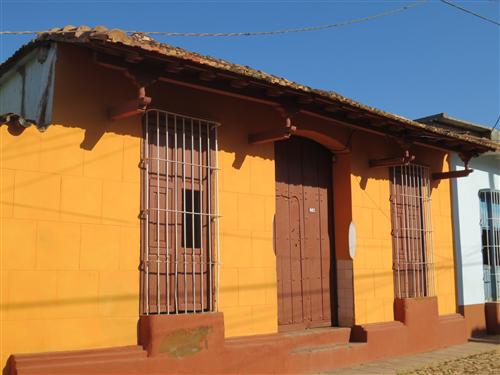
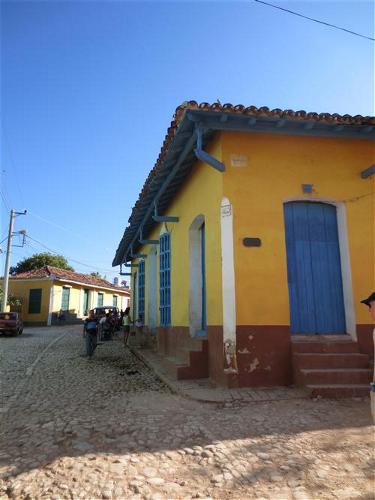
We made our way to the Plaza Mayor, which used to be the Plaza de Armas but now boasts 20th century landscaping. There we viewed the exterior of many buildings, including the 1894 Iglesia Parroquial de la Santisima Trinidad (Church of the Holy Trinity). Built on the site of an earlier church that was destroyed in a storm, the current church has a rather austere façade.
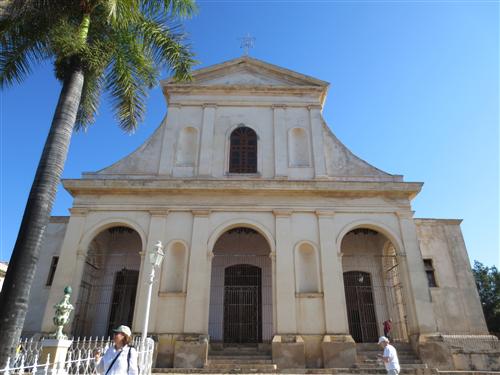
On an adjacent side of the square is Casa Sánchez Iznaga (House of Sánche Iznaga), which was home to families of the same name who were sugar barons in the area. The Sánchez Iznaga family owned the nearby Manaca Iznaga sugar estates. Built in 1710, but with additions made as late as the 19th century, the structure now houses the Museum of Architecture, which is part a museum of detailed explanation of architectural history in Cuba and part house museum. The central room one enters into in the house shows how the house may have appeared in the 19th century. It contains a chandelier from France, flooring and a center table made from Italian marble, and Meissen porcelain, but the ceiling is undeniably Cuban. Beautifully carved roof trusses such as these are a characteristic of colonial architecture throughout the island, some of which were painted. Other parts of the house contained the modern amenities the family enjoyed in the 19th century, such as a gas lighting system, flush toilet, and shower.
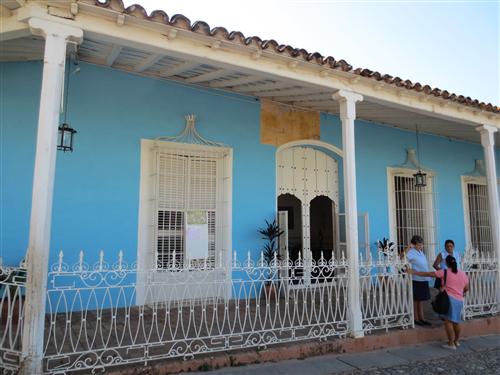
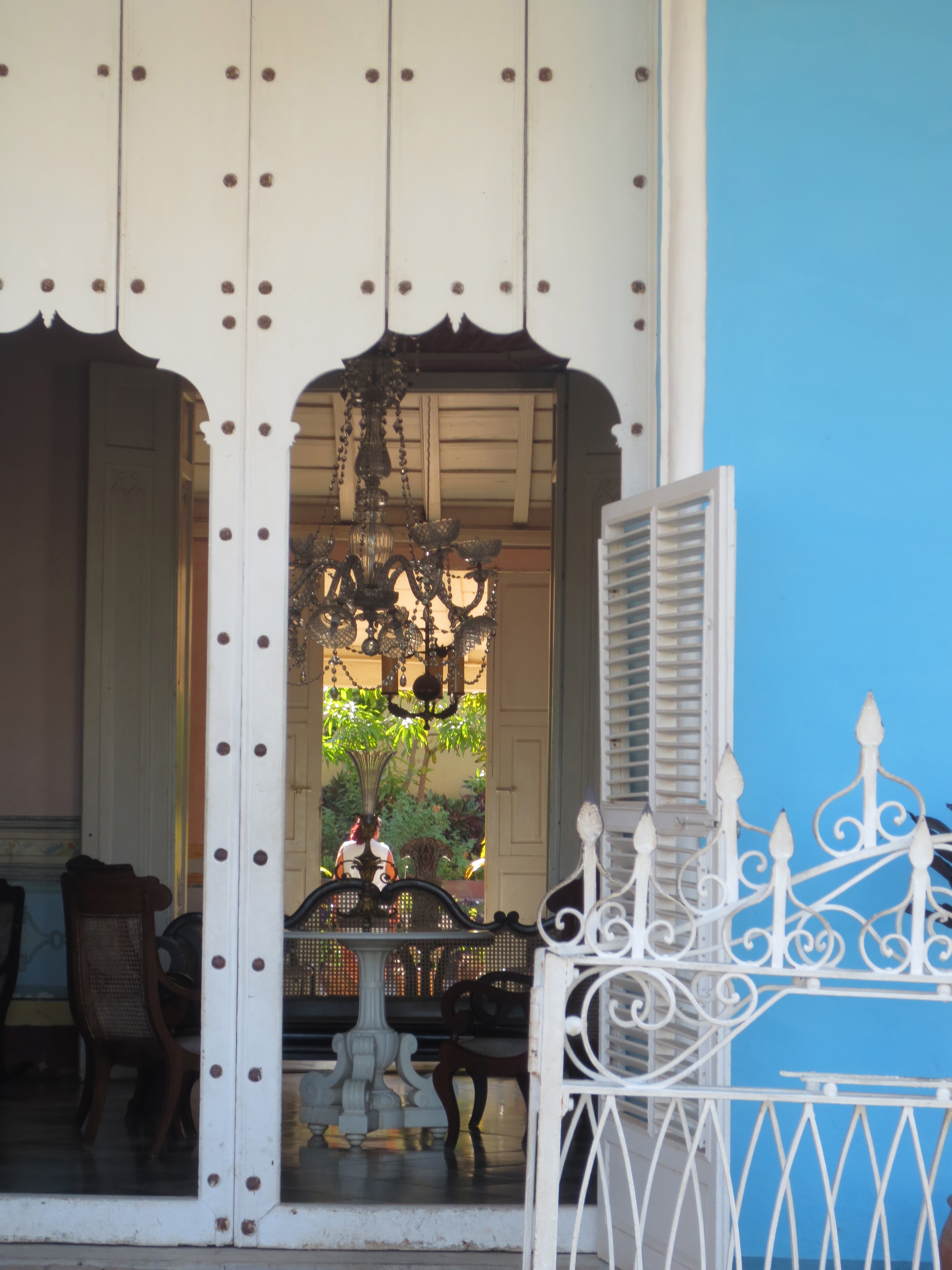
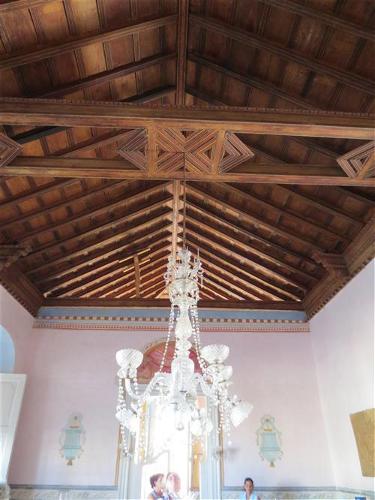
After lunch in Trinidad we set off for Valle de los Ingenios (Valley of the Sugar Mills). This was one of the first in Cuba to be cultivated for sugar in the late 17th century, partly due to the very rich soil and easy access to slaves because of Trinidad’s trade connections to Jamaica. Sugar production was later industrialized and the Valley is now scattered with the remains of sugar plantations, some in better shape than others. We first tried to visit Hacienda Buena Vista, which Monty had visited in the past. It has suffered so much deterioration that we had a hard time even locating it, and then could not visit due to an impossible road for our bus. However, Monty shared good news that this site is slated for restoration. We did visit Manaca Iznaga, the sugar plantation run by the same family who owned the home that now houses the Museum of Architecture. One of the most architecturally interesting features of this estate was the large tower that was used to oversee the activities on the estate. In this way, overseers could keep track of slaves and their labor and better coordinate the movement of cut cane, and movement of goods to and from the railroad.
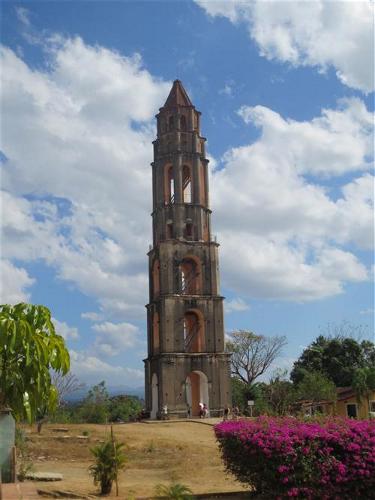
In the afternoon we made a quick stop in Sancti Spiritus, another of the seven settlements of Diego Velázquez. On the way in to the town we passed fields of garlic and onions, and Osmin informed us that Sancti Spiritus is famous throughout the island for its onions of incomparable flavor. We admired Parroquial Mayor del Espiritu Santo (High Church of the Holy Spirit), a 17th century church, and then moved on to Plaza Central (Central Square), though the aspect of our visit to Sancti Spiritus that left the strongest impression on me was our walk up the main commercial street. Although the vegetable market was closed (we all wanted to see one), it was great experience to move through the streets with all of the locals who were out shopping, conducting business, or hanging out with friends.
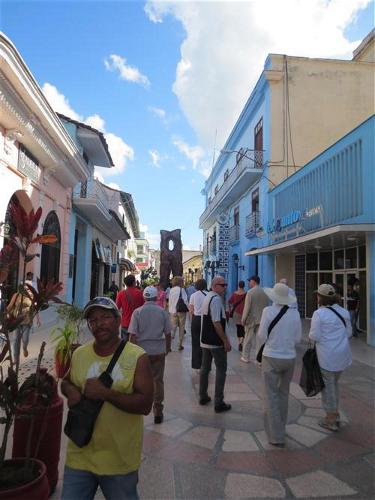
 Erica N. Morawski, Ph.D. Candidate, University of Illinois - Chicago
Erica N. Morawski, Ph.D. Candidate, University of Illinois - Chicago
Erica N. Morawski is a Ph.D. candidate in art History at the University of Illinois – Chicago. She received a BA in art history at Tulane University and MA in Art History at the University of Texas at Austin. She is currently completing a dissertation entitled, “Designing Destinations: Hotel Architecture, Urbanism, and American Tourism in Puerto Rico and Cuba.” This work investigates the role of hotels in shaping understandings of national identity, which in turn shaped international relationships, through an approach that systematically ties object and image analysis with social, political, and economic histories. Her work argues that these hotels functioned, and continue to function, like diplomatic cultural attachés—their design shaped politics on the islands, and played a decisive role in shaping past and current international relations.